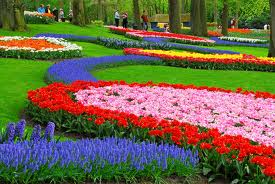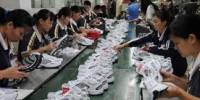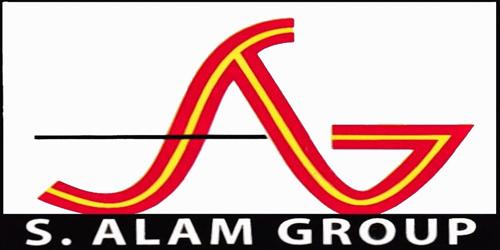Introduction
The rural-urban dichotomy reveals wide disparities in various respects. The division of economic activities between rural and urban areas is one of them. Rural areas specialize more or less exclusively in agriculture, while industries are exclusively located in urban areas. Given the weak rural-urban or agriculture-industry linkages, such a situation suffers from two serious shortcomings. First, as agriculture by itself has a tendency to develop at a slower pace than industry, the division of economic activities leads to uneven development. Second, since industry generally leads to higher level of output per worker than agriculture, the gap income levels between those engaged in the two sectors tends to widen. In such situation, rural entrepreneurship is viewed as an effective means of accelerating the process of rural development. Entrepreneurship precedes industrialization. Hence, the need for rural entrepreneurship.
This paper is, therefore, devoted to deal with various aspects of entrepreneurship, such as, its meaning, need, strategies for rural development in Bangladesh.
2. Rural development & Entrepreneurship
Entrepreneurship emerging in rural areas is called rural entrepreneurship. Rural entrepreneurship symbolizes rural industrialization. Rural industrialization provides the best solution to tackle with the twin problems of unemployment and poverty stalking the rural areas in the country, which accelerate the pace of rural development.
However, the rural development is plagued by some major problems like inadequate flow of credit; use of obsolete technology, machinery and equipment and inadequate infrastructural facilities. Solving these problems is necessary for developing rural entrepreneurship.
3. Entrepreneur
An entrepreneur can be defined as one who initiates and establishes an economic activity or enterprise. He arranges everything required to set up an enterprise i.e., funds, land, people, material and machinery.
An entrepreneur differs from a manager on various counts. The former is owner, whereas the latter is a servant. Entrepreneur is rewarded with profit which is highly uncertain. On the other hand, manager gets salary as a reward for the services rendered by him in the enterprise.
The Features of Entrepreneurship:
- Being an Economic Agent: Entrepreneurship is mostly an economic function because it involves the formation and maneuver of an enterprise. It is basically concerned with the production and distribution of services.
- • Being Creative: Entrepreneurship is a resourceful response to changes in the environment. It involves innovation or introduction of something new and better. An entrepreneur is a change agent.
- • Taking and Bearing Risk: Risk is an inherent, intrinsic and inseparable element of entrepreneurship. An entrepreneur assumes the uncertainty of future. In the pursuit of profits there is every possibility of loss.
- • Being Innovative: Entrepreneurship is an innovative function as it involves doing things in new and better way. Innovation may take in several forms e.g. a new product, a new source raw material, a new market, a new method of production etc.
- • Being Dynamic: Entrepreneurship is a dynamic function. Entrepreneurs thrive on changes in the environment that bring useful opportunities for business.
Entrepreneurs always need to take different dynamic decisions.
4. Stages of business planning and our thinking
There are various stages of business planning. Different business may follow different planning stages. The standard format is given below which is followed by all business regardless of their different purpose:
Now our thinking on our entrepreneurship is given:
Stage 1: Start-up plans: First, we think the economic context and rural development perspectives of our country. Considering the demand for flowers in the domestic market as well as international market, we set our mind to go for flower growing business. This will be a partnership business and we will form a written agreement among the partners.
Stage 2: Business Focus or growth planning: Our objective is to produce flowers using local resources and to supply primarily to the domestic flower shop and later expand our business overseas. In this stage, our business will move into the market by linking up with local dealers and distributors.
Stage 3: Selling or Succession Planning: In the stage three, we will begin to carry out our own manufacturing, marketing and sales in the key domestic markets. With a short period of time, our business will move to a full insider position in the markets, supported by a complete business system including R&D and engineering.
Stage 4: Finance application & funding plans: This will be a partnership business and capital will be collected equally from the partners. Not only investment fund but also operational expense, research and development and all other cash flow required to run the business will be provided by the partners equally. Partners will share profits earned and losses incurred equally.
5. Implementation of Business Planning:
- First, we will go for market research and collect all information relevant to establish a flower business. After analyzing market information we will try to match with our internal planning.
- Market review will help us making our business plan more accurate. We will ensure basic resources such as capital, human resources, physical resources, natural resources, technology etc. necessary for establishment of a business.
- Constructing the organizational structure and fulfilling legal formalities, we will go for production.
- Our marketing channel will be indirect, that means we will use market intermediaries to reach customers. Our marketing department will arrange for some promotional activities that will seem lucrative to the intermediaries i.e. wholesalers, resellers etc.
6. Profile of our proposed rural entrepreneurship:
Name: Flower Heaven
Proposed business: Growing Flower (commercial)
Type: Partnership Organization
Address: Nobinagar, Savar
Capital: 2,00,000 * 5 = 10,00,000
Profit & loss: Equally by the five partners.
Management: By the partners & some required employees
Registration: Trade license
Nature: Production, processing and marketing.
Accounting: 6 months
Period: 2 accounting period in a year
Dissolution: According to the agreement of the partners.
Mission:
- Producing and marketing high quality and lucrative flowers.
- Achieving a position in the competitive flower supply market.
- To increase the technical knowledge of farmers related to flower production
- Creating employment opportunity of rural people.
- contributing for rural development
Our products: Rose, Tuberose, Gladiolus and marigold
Our choice for going to establishing a flower growing firm has a depth realization. On the occasion of marriage, birth, death and wedding anniversaries or in fact, on big or small occasions, flowers are replacing other items as gift, which was not in practice even a decade back. And over 50 percent of the flower need in the country is being met by India. So there is a great potentiality of flower growing and marketing in Bangladesh especially in the capital city Dhaka.
7. Production Planning:
The available resources of production are given below:
- Capital: Through our own capital.
- Weather: Suitable weather with fertile soil and sufficient day light.
- Land:5 acre in Nobinagar, Savar.
- Labor: Available unskilled labor with low cost and skilled employees should be recruiting with specific wages.
- Raw materials: All necessary raw materials required for flower production.
- Organization: Specific organization structure with head office.
Steps of production below:
Farm Location selection |
Soil Testing |
Planting |
Cultivation |
Irrigation |
Crop and Pest management |
Harvesting |
8. Organization and Management:
Office: Head office in Nobinagar, Savar
Farm Location: Nobinagar, Savar
Management Team
Department activities of our business:
- Production Department: It will coordinate the production activities at different activities ad different stages. Production manager is responsible for the activities of this department.
- Finance & Accounts Department: It will use the fund and ensure the stability of fund. Preparing financial statement is another responsibility of the finance & accounting manger.
- Marketing & Sales Department: It will deal with the marketing of the product and ensure the sales effectively. Marketing manger is responsible for this department.
- HRM Department: It will deal with the human resource activities. Employee recruitment, provide training etc are the duties of HRM manager.
9. Finance Planning:
Our Finance and Accounting department prepared projected
Budget,
Income statement and
Balance sheet
Cash Budget
For six months, ending December 31, 2009
Expected Cash Payments:
- Land (rent for 6 months; 20,000*6) = 1,20,000
- Raw materials = 1,00,000
- Equipment = 1,00,000
- Labor wages (20L* 80tk* 180 days) = 2,88,000
- Office (rent for 6 months; 10,000*6) = 60,000
- Delivery van (rent for 6 months; 5000*6) = 30,000
- Other expense = 2,000
- Cash (Fund) = 3,00,000
- Total expenditure = 10,00,000
Expected Cash receipts:
- Cash Sales = 5,30,000
- Collections on a accounts receivable = 20,000
- Total cash receipts = 5,50,000
Flower Heaven Enterprise
Income Statement
For the month ended, December, 31,2009
Revenues:
- Cash Sales = 5,30,000
- Collections on a accounts receivable = 20,000
Total Revenue = 5,50,000
Expenses:
- Labor wages = 2,88,000
- Raw materials = 1,00,000
- Other expense = 2,000
Total Expense = 3,90,000
Net Profit = 1,60,000
Flower Heaven Enterprise
Balance Sheet
December 31, 2009
Assets:
Cash = 8,30,000
Accounts receivable = 20,000
Land = 1,20,000
Equipment = 1,00,000
OfficeBuilding = 60,000
Delivery van = 30,000
Total Asset = 11,60,000
Liabilities &Owner’s equity
Capital = 10,00,000
+ Net income = 1,60,000
Total Liabilities & Owner’s equity = 11,60,000
10. Marketing Planning:
Possible market:
CapitalCity
District towns in our country
Export to other countries
Sales Tactics: Our concern is not to maximize profits but to create a position in the market. Doing so, will reduce costs and increase profit in the long run.
Overall marketing strategy:
- Competitive rate
- Proper advertising and promotional activity
- Use trade magazines
- Personal selling activities
- Promote out of season services
11. Facing Threats and Removing weakness
We will face our threats in following ways:
- Maintaining public relation
- Competitive rate
- Cultural representation
- Concern of customer need
- Social responsibility
- Seeking assistance from government if necessary
We will remove our weakness by:
Increase our efficiency
Train up ourselves and the employees
Introducing R&D department
12. Opportunity Maximization
Our plans for the opportunity maximization are:
- Demographic and population analysis
- Customer attitudes and opinions
- Statistical analysis and modeling
- Site selection and land use analysis
- Market feasibility and demand analysis
- Customer satisfaction measurement
13. Risk Minimization
Our plans for the risk minimization are:
- Maintaining Emergency Fund
- Identifying alternative sources of production function
- Identifying alternative selling and marketing channel
- Keeping privacy about business information and strategy
- Keeping good relation with the local interested group
- Obeying the government rules and regulation
14. Contribution in Rural and Community Development
- Employment: In our business we will facilitate employment for the skilled people in the rural area. There are is also the opportunity of employment of unskilled labor in the production & processing stages. Almost 50 workers will get job in our farm.
- Rural infrastructure development: Employment will foster the living standard of rural people. Moreover we will try to build necessary infrastructure in the rural area.
- Communication development: There will be the communication development through our entrepreneurship. The transportation system will be developed and the inter-regional communication will increase. So we will be able to make a genuine contribution in the development of communication in the rural area.
- Environment friendly working area: Our ‘flower haven’ is totally environment friendly working area. There is no pollution.
- Providing training: We will provide training facilities for the rural unskilled labor and employees.
15. Conclusion
Rural development is a continuous process. There are multidimensional aspects in the rural development activities. If the rural development is considered as a system than there are various subsystems and the national development is the super system. Our choice for going to establishing a flower growing firm has a depth realization. On the occasion of marriage, birth, death and wedding anniversaries or in fact, on big or small occasions, flowers are replacing other items as gift, which was not in practice even a decade back. And over 50 percent of the flower need in the country is being met by India. So, there is a potentiality of flower cultivation commercially in Bangladesh. Our entrepreneurship facilitates employment facilities in the rural area. So our rural entrepreneurship is highly suitable for the process of rural development.

















